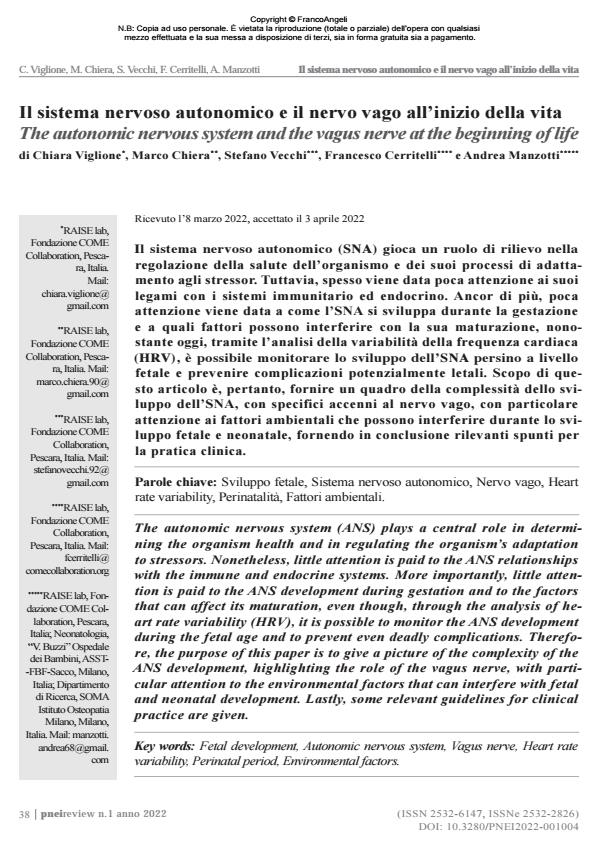The autonomic nervous system and the vagus nerve at the beginning of life
Journal title PNEI REVIEW
Author/s Chiara Viglione, Marco Chiera, Stefano Vecchi, Francesco Cerritelli, Andrea Manzotti
Publishing Year 2022 Issue 2022/1
Language Italian Pages 15 P. 38-52 File size 178 KB
DOI 10.3280/PNEI2022-001004
DOI is like a bar code for intellectual property: to have more infomation
click here
Below, you can see the article first page
If you want to buy this article in PDF format, you can do it, following the instructions to buy download credits

FrancoAngeli is member of Publishers International Linking Association, Inc (PILA), a not-for-profit association which run the CrossRef service enabling links to and from online scholarly content.
The autonomic nervous system (ANS) plays a central role in determining the organism health and in regulating the organism’s adaptation to stressors. Nonetheless, little attention is paid to the ANS relationships with the immune and endocrine systems. More importantly, little attention is paid to the ANS development during gestation and to the factors that can affect its maturation, even though, through the analysis of heart rate variability (HRV), it is possible to monitor the ANS development during the fetal age and to prevent even deadly complications. Therefore, the purpose of this paper is to give a picture of the complexity of the ANS development, highlighting the role of the vagus nerve, with particular attention to the environmental factors that can interfere with fetal and neonatal development. Lastly, some relevant guidelines for clinical practice are given.
Keywords: Fetal development, Autonomic nervous system, Vagus nerve, Heart rate variability, Perinatal period, Environmental factors.
Chiara Viglione, Marco Chiera, Stefano Vecchi, Francesco Cerritelli, Andrea Manzotti, Il sistema nervoso autonomico e il nervo vago all’inizio della vita in "PNEI REVIEW" 1/2022, pp 38-52, DOI: 10.3280/PNEI2022-001004